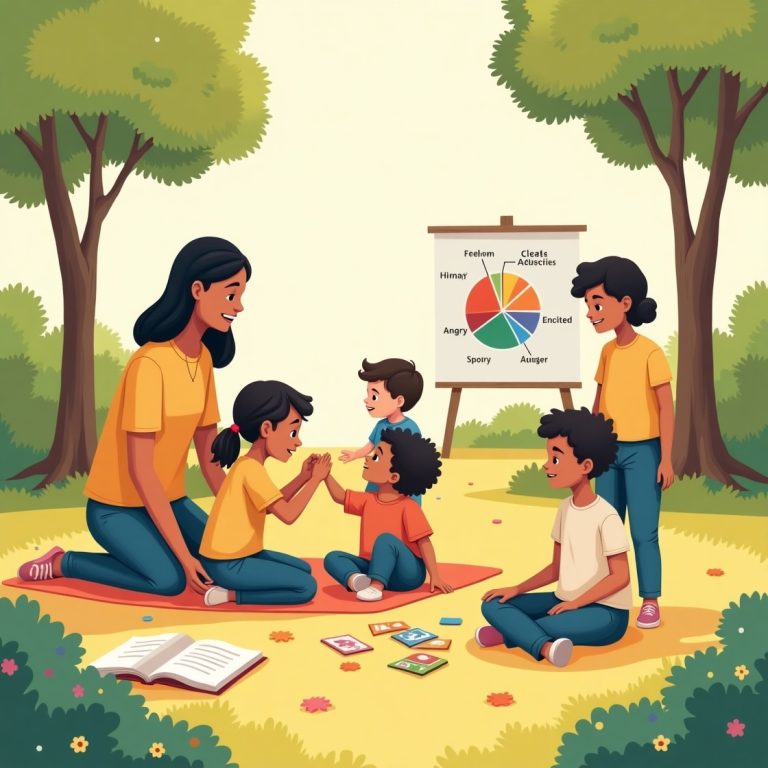Emotional intelligence (EQ) is a critical skill that helps children navigate relationships, manage emotions, and succeed in life. As parents and caregivers, fostering emotional intelligence in kids is one of the most valuable gifts you can give them. In this guide, we’ll explore actionable strategies, activities, and insights to help you nurture EQ in your child.
What is emotional intelligence?
Emotional intelligence refers to the ability to recognize, understand, and manage one’s own emotions while empathizing with others. For kids, developing EQ means learning to express feelings appropriately, resolve conflicts, and build strong relationships.
Why Is Emotional Intelligence Important for Kids?
Research shows that children with high emotional intelligence:
- Perform better academically.
- Have healthier relationships.
- Exhibit fewer behavioral problems.
- Are more resilient in the face of challenges.
By building emotional intelligence in kids, you’re equipping them with tools to thrive in school, friendships, and beyond.
How to Build Emotional Intelligence in Kids
1. Teach Kids to Identify Emotions
Help your child recognize and name their feelings. Use tools like emotion charts or books to make it fun and engaging. For example, ask, “Are you feeling happy, sad, or frustrated right now?”
2. Model Emotional Regulation
Kids learn by observing adults. Show them how you manage your emotions by staying calm during stressful situations and verbalizing your feelings.
3. Encourage Empathy
Teach your child to consider others’ perspectives. Ask questions like, “How do you think your friend felt when you shared your toy?”
4. Practice Active Listening
When your child speaks, please give them your full attention. This teaches them the importance of listening and validates their emotions.
5. Use Play to Build EQ
Role-playing games, storytelling, and board games can help kids practice empathy, cooperation, and problem-solving.
How Play-Based Learning Prepares Kids for Success
6. Validate Their Feelings
Avoid dismissing emotions like anger or sadness. Instead, say, “I understand you’re upset. Let’s talk about it.”
7. Teach Problem-Solving Skills
Guide your child through resolving conflicts. For example, “What can you do to make your friend feel better?”
Activities to Boost Emotional Intelligence
- Emotion Charades: Act out different emotions and guess what they are.
- Feelings Journal: Encourage your child to write or draw about their daily emotions.
- Mindfulness Exercises: Practice deep breathing or meditation to help kids stay calm.
Common Challenges and Solutions
Challenge: Tantrums and Meltdowns
Solution: Stay calm and help your child identify the emotion behind the outburst.
Challenge: Difficulty Sharing or Taking Turns
Solution: Use positive reinforcement and practice sharing during playtime.
How to Measure Progress
- Observe how your child handles conflicts.
- Notice if they’re better at expressing emotions.
- Ask teachers or caregivers for feedback on their social interactions.
Frequently Asked Questions
Q: At what age should I start teaching emotional intelligence?
A: You can start as early as toddlerhood by labeling emotions and modeling healthy behavior.
Q: Can emotional intelligence be taught in school?
A: Yes, many schools incorporate social-emotional learning (SEL) programs to help kids develop EQ.
Final Thoughts
Building emotional intelligence in kids is a journey that requires patience, consistency, and love. By teaching your child to understand and manage their emotions, you’re setting them up for a lifetime of success. Start small, celebrate progress, and remember that every step counts.



